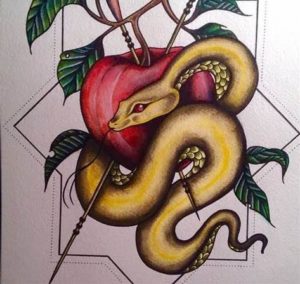We’ve been facing tradeoffs since the Garden of Eden, and they shape all of our decisions.
There are a lot of good frameworks for thinking about consumer decision-making, but Tradeoff Analysis is one of my favorites. Often, much of the assessment individuals engage in when evaluating alternatives involves weighing what they are giving up against what they’re getting in return. Utility, a term from the field of economics, refers to the ability of something to satisfy needs and wants. Realizing this, and using my Utility Tradeoff Model, provides valuable opportunities for smartly designing, conducting and analyzing qualitative research.
Why are tradeoffs so important? Consider General Mills during the early 1950s. They had introduced Betty Crocker cake mixes in 1947. Sales, originally brisk, plateaued a few years later. This made little sense given the selling proposition – pay a small premium over the cost of the component ingredients in exchange for convenience. That offering seemed like a winner in a postwar America focused on time- and labor-saving innovations. After conducting focus groups, the company realized that what they thought was a simple tradeoff was actually more complex. It became clear that the product was actually TOO easy to use; all that was required was a box of mix, some water, and a few common kitchen implements. But, because it asked so little of a 1950s American housewife, it made her feel that she wasn’t giving enough of herself in preparing the cake. The solution: eliminate the powdered egg in the mix and have the user add her own fresh ones. Problem solved! The lesson learned: because the product was too easy, the user wasn’t just paying an economic price, she was also paying a price in self-esteem, and that became too much to pay in exchange for convenience.
Why recount this case? It’s about tradeoffs! Here was a situation in which the company understood what their consumer was getting, but didn’t fully understand what she was giving up. And that’s why tradeoff analysis is such a useful tool. It provides a framework for looking at both sides of the value proposition– the benefits AND the costs—so we can obtain a full understanding of how a product or service creates utility.
We all seek to maximize utility. But, contrary to the pronouncements of classical economists, there is more to utility than money and other quantifiable factors. Utility is complicated, and squishy and messy. That’s a lot of what the field of behavioral economics is about – providing a more nuanced and complete definition of utility – and the Utility Tradeoff Model has some of its roots in that field
I was originally exposed to behavioral economics in the 1990s by Vic McGee, a former business school professor of mine. Vic had sent me some academic journal articles on the topic by Daniel Kahneman and Amos Tversky. My takeaway from these papers was that utility is much more complicated than I’d originally been taught, that money is only one building block of utility, and that decision making is not always as neat and rational as we’d like to think. So, in the combination of my going-in knowledge of consumer tradeoffs and what I was learning from Kahneman and Tversky, the Utility Tradeoff Model was born.
The Utility Tradeoff Model is based upon the premise that consumers express utility in terms of five currencies, with each decision carrying both gains and losses. Those currencies are:
-
Time
-
Energy
-
Money
-
Performance
-
Self-esteem

